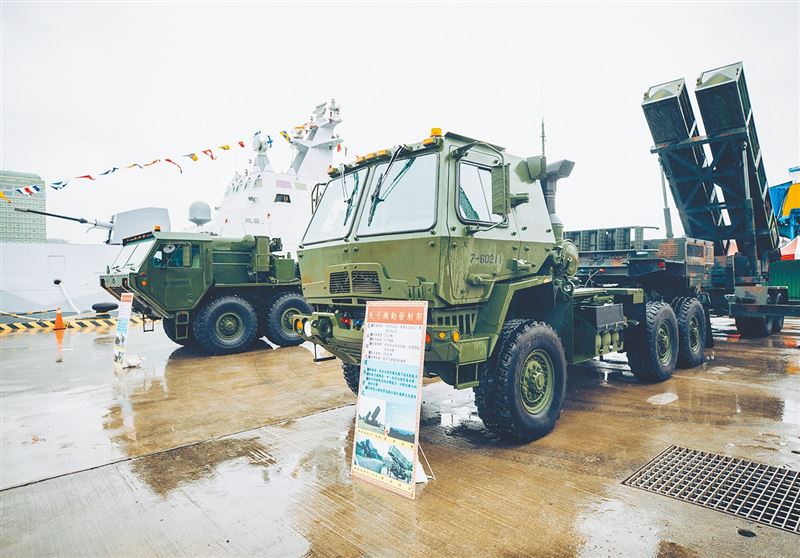天弓飛彈為國人自主研發的防空飛彈,共區分1至3型,可依戰況需求,結合中科院研製的戰術中心、通信中繼車、第2代相列雷達,反制高性能戰機、巡弋飛彈、反輻射飛彈及戰術彈道飛彈等多種威脅目標,捍衛臺海領空安全。
Reported by Chi-chen Fu
Translated by Warren King
Photo Credit:YDN
Right after the August 23rd Artillery Bombardment occurred in 1958, the R.O.C. military was being assisted by the MIM-14 Nike Hercules, a surface-to-air missile (SAM) for long-range air defense, through U.S. military aid channel, with the 71st Air Defense Artillery Regiment of the United States Army immediately deployed to northern Taiwan on October 5, 1958.
The R.O.C. Government had suffered a hard time getting newly developed air defense missiles through arms procurement channel due to the rising adversary threat from the P.R.C. as well as the constrained international relations in the late 1970s. Under such circumstances, the R.O.C. Government determined to develop a series of surface-to-air missile weapon systems on its own. Thus, the Tien Kung (Sky Bow) Program was initiated in November 1981 by the Chung-Shan Institute of Science and Technology (CSIST) with an aim to develop Tien Kung I (TK-1) and Tien Kung II (TK-2) missile weapon system consecutively.
The TK-1 SAM weapon system was commissioned into service in 1993 after more than 10 years of research and development. With firing range up to 100km, the TK-1 missile weapon system was designed to engage medium-range and multiple target threats, aiming to deal with saturation attack and intercept the advanced fighter jets in the 1990s.
The TK-2 SAM weapon system, with its firing range up to 200km, came into service in 1998. Using an X-Band active-radar seeker for terminal homing, the TK-2 missile system was capable of engaging multiple target threats to effectively counter saturation attacks from the adversary. It was primarily used to intercept advanced fighter jets from the other side of the Taiwan Strait to safeguard territorial airspace.
The Tien Kung III (TK-3) SAM weapon systems have been delivering to the R.O.C. troops for deployment since 2017. Designed with greater mobility than its predecessor TK-1/2 systems, the TK-3 weapon system is mainly composed of hypersonic missiles carrying directional warhead, self-contained launchers remotely-operated by Engagement Control Station and Communication Relay Vehicle, and upgraded Phased-Array Radar to uplink targets and missiles tracking information to the missiles. Featuring hypersonic capability with electronic counter-countermeasures (ECCM) and multi search modes, the TK-3 missile can be used against multiple targets, such as high performance fighter jets, cruise missiles, anti-radiation missiles, and tactical ballistic missiles. In addition, Engagement Control Station can also carry out weapon assignment to launch TK-1 and TK-2, if operational situation requires, to safeguard the R.O.C. territorial airspace over Taiwan Strait with such a state-of-the-art technology.

